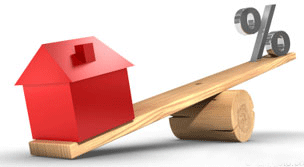With rates slowly on the rise, does buying still make sense vs renting?

With mortgage rates slowly increasing is buying more affordable than renting?
It’s no surprise that when headlines scream that rates are on the rise while others declare that rates are historically low, borrowers have questions and concerns.
Historic context is key to understanding how rates behave. The downward trend of rates the last 20 years proves that buying a home truly is a better option than renting.
First, what are mortgage rates?
Just like any loan or line of credit, mortgages come with interest, which, of course, is the
cost of borrowing money. A host of market factors beyond the lender’s control
determine what those rates are, including activity on the bond market and how apt
investors are to buy mortgages bundled as securities.
Now, the history lesson, here are three things you should know about the nature of
mortgage rates over the last two decades.
1) Rates have been falling for years
We’ll use the 30-year fixed-rate mortgage as a benchmark since they’re the most
popular home loan option in the U.S. and often used as a basis for news and research
findings. 30-year mortgages peaked at just over 8 percent in 2000; they were as high as
18 percent in the early 1980s. Rates have been on a steady decline over the last 20
years. Sure, there have been ups and downs — the most dramatic of which was the
credit crisis that drove rates to historical lows. But rates, overall, are influenced by
economic activity, inflation and monetary policy.
2) Buying a home was a bargain back then. It still is today.
Need proof? Let’s crunch some hypothetical numbers.
In June 2000, the median price of a home was $140,000 and the rate on a 30-year
mortgage was 8 percent. If a borrower financed this at a 90 percent, the principal and
interest payment was approximately $925 a month. Compare that to 2017 when the
median price of a home is $245,000 and the 30-year mortgage rate is 3.8 percent. If a
borrower finances this at a 90 percent loan-to- value, the principal and interest payment
would be approximately $1,025 a month. This shows that in the span of 17 years, the
average mortgage payment has increased by just $100 on principal and interest only.
This does not take into consideration property taxes and insurance, which vary across
different states.
Rental rates, meanwhile, continue to rise with no sign of slowing down. Last year, the
Wall Street Journal reported that rent in 2015 increased 4.6 percent to approximately
$1,180, up from $1,125 a year earlier. Put that in perspective: Rent went up about $60
in the span of a year, exceeding the average cost of a mortgage, while the cost of
owning a home went up $100 over a much longer timeframe.
The bottom line: Homeownership over time is a better investment and more affordable
than renting.
3) Rates will rise again
It’s inevitable. As the economy strengthens, mortgage rates are going to rise, potentially
reaching 5 percent by 2019, according to the Mortgage Bankers Association.
The Fed’s changing of the guard will influence rates. In February, Jerome “Jay” Powell
will succeed Janet Yellen as the Fed chair. Powell shares a similar cautious outlook on
rates as Yellen. But he also favors deregulation, which should help the economy grow
faster. That will cause rates to go up. And as the economy expands, which it seems
poised to do, the Fed will hike rates to balance growth and inflation.
The sooner you can take advantage of lower mortgage rates the better.
Doctorloanprograms.com contributor
Recent Posts
- Expert Insights – What Lenders Look For In Doctor Loan Applicants
- Exploring The Eligibility Criteria For Doctor Loan Programs – Are You Qualified?
- Maximizing Your Purchasing Power – Strategies For Using Doctor Loan Programs Effectively
- The Future Of Doctor Loan Programs – Trends And Changes You Should Know
- Success Stories – How Doctor Loan Programs Have Helped Physicians Achieve Homeownership




